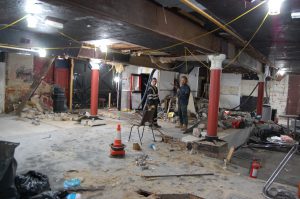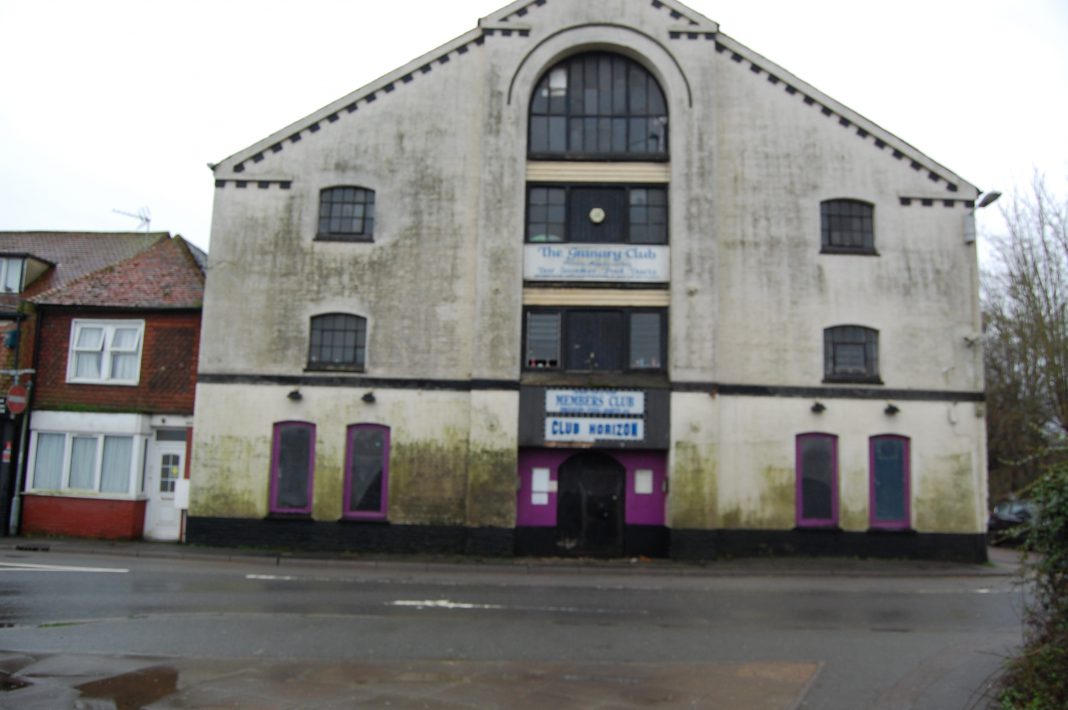As site development into residential units commences at the Granary Club (also known as the Oasis Club) at 48 Ferry Road, secrets of its late Victorian construction have become revealed. Inside the brick walls is a framework of cast iron stanchions and joists, the skeleton, supporting the whole structure. The posts were cased in wood at some stage and the columns with their distinctive decorated capitals were not visible or described in the planning application.

Since they are clearly an important architectural feature, Rye Conservation Society has drawn Historic England’s attention to them with a request for spot-listing. The fear is that the proposed internal car-parking in the developer’s plan might cause the loss of some of the historical fabric.
However, the building is not within the Rye Conservation Area nor is it locally listed by Rother District Council as a non-heritage designated asset. It is likely therefore that Historic England will find the building too altered and lacking the high historic and architectural significance to warrant national protection.
The intervention of the Conservation Society was successful at an earlier stage in getting the original plans modified to retain the building’s characterful fenestration with its harmonious arrangement of windows on the north and east elevations.
The building dates from the late 1880s, when it was a corn and hop warehouse for poultry and game foods. It was described in local architectural historian Alan Dickinson’s book Rye Through Time.
Planning permission has been granted for conversion of the former private club into nine residential units with planning use A3 on the ground floor (sale of food and drink on the premises).
Image Credits: Kenneth Bird .




Circa 1960 I worked in this building in what was then Foremans grain & feed warehouse. it was just a post school temp job and it was pretty basic in terms of technology.
One of my jobs was to fill hesian sacks from a chute after grain was milled and sow them up; it was a pretty dusty job.
These sacks were about a hundredweight and it was a two man lift to shift them. Formans had a fleet of Commer lorrys that were rather unusual in that they were 2 stroke diesel and made a very distinctive sound; more like a motorcycle.
We would load them onto the lorry for delivery to surroundig farms and a treat for me was to go with the driver and help unloading, so escaping the boring dusty job in the warehouse. I wasn’t there for long but it was a local institution at the time.